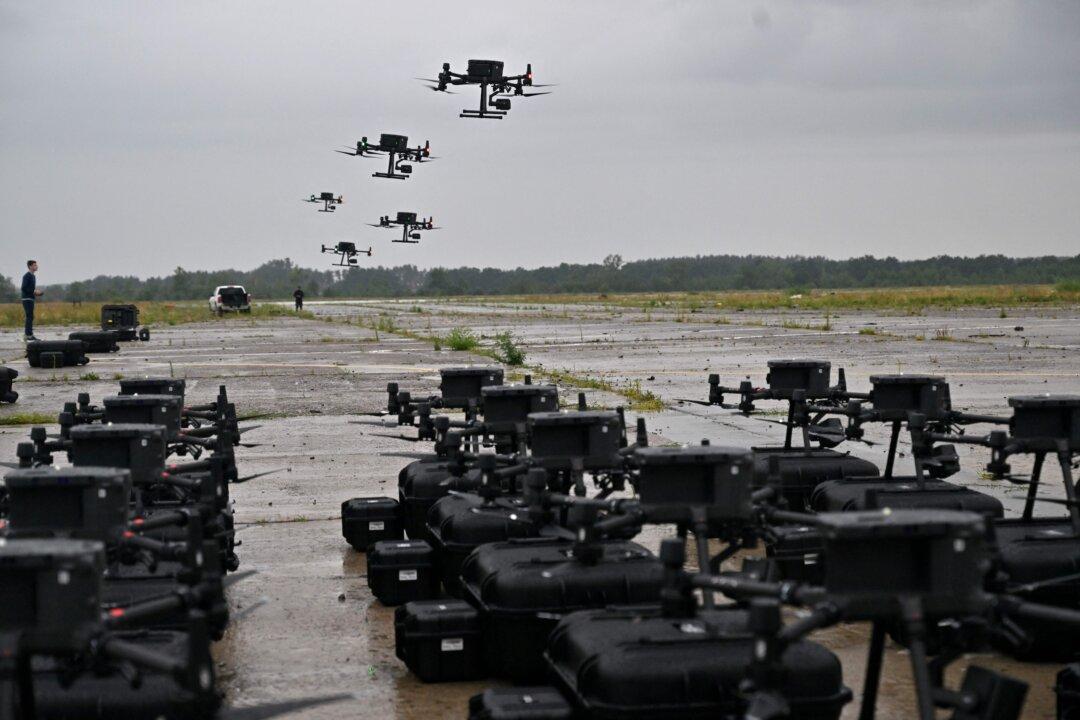Commentary
In a White House press conference, President Donald Trump and Secretary of Defense Pete Hegseth announced that Boeing has won the contract to develop and build the Next Generation Air Defense (NGAD) fighter. This sixth-gen fighter has received the official F-47 designation from the Air Force and is slated to replace the F-22. Surprising many,
Boeing beat out Lockheed Martin for the contract.
Trump had nice things to say about the F-47, stating that it “will be the most advanced, most capable, most lethal aircraft ever built.” He is not alone in his admiration for the F-47. Air Force Chief of Staff General David W. Allvin is also a fan, releasing a
statement declaring that “the F-47 will feature next generation stealth, sensor fusion, and long-range strike capabilities to counter the most sophisticated adversaries in contested environments.”
Whether the F-47 will deserve all the superlatives describing it is yet to be seen, but it will be the most complex fighter plane ever built and almost certainly the most expensive. Rather than being developed as a standalone fighter, the F-47 is being developed as a
system of systems in which it will act as the controller/mothership for unmanned drones that will act as its “loyal wingman.”
If successful, this will be a big leap forward as the drones, the loyal wingmen, can be configured for a wide variety of missions, including air superiority, air interdiction, surveillance, decoy duty, and perhaps even close air support. When flying into danger, it will be the loyal wingmen that take point. It certainly sounds great, but so did the F-35 when development began on it in 1994, more than 30 years ago.
It is widely being
reported in the media that Boeing’s F-47, or the F-47 prototype, has already been flying for five years. This is not true. What has been flying for the last five years
are flight demonstrators,
X-planes built by Boeing and Lockheed Martin, which began flying in 2019 and 2022. It is also possible that Northrup Grumman developed a technology demonstrator before it
bowed out of the competition for the NGAD contract in 2023. Together, these technology demonstrator “X planes” have accumulated “hundreds” of hours. The purpose of these X demonstrator aircraft, including the F-35’s X-35 demonstrator craft, is to demonstrate and mature the technologies that will be foundational to the actual F-47.
While it has not been made public, the fact that Boeing beat out Lockheed Martin for the contract strongly suggests that Boeing’s X-plane(s) outperformed Lockheed Martin’s X-plane(s) in some sort of “flyoff.” Regardless of the details, Boeing has won the contract to design the F-47, which will involve designing and developing a prototype and then taking what is learned from the prototype to design the actual F-47. So, once again, despite a number of stories describing F-47 prototype flights, what we have are technology demonstrators that have been flying, and it will almost certainly be at least a few years till we seen an F-47 prototype.
Indeed, over the next five years, the Air Force expects to spend at least $19.6 billion to develop the F-47, and in the years after that, more billions of dollars will be spent to develop its loyal wingman drones. Assuming that Boeing is successful in shepherding the F-47 to full-rate production, the contract will be worth hundreds of billions of dollars.
While we don’t actually have an F-47 prototype plying the skies and while the program’s secrecy means details of what the F-47 will look like are scarce, we can make some educated guesses as to F-47 basics. First of all, on a per plane basis, it will be very expensive.
Original estimates put the
F-47 at $300 million, but the Air Force is now saying each F-47 should only be about
$100 million each. Given the historical reliability of such lowball estimates, it will likely end up being closer to the original estimate than the new lowball figure being touted by the Air Force. When operating as envisioned, each F-47 will be accompanied by three very expensive drones, with one analyst estimating each three drone/F-47 group coming in at $1.7 billion. A Wall Street Journal article estimates it could take
as much as $50 billion to complete development.
So, despite some reporting to the contrary, we are many billions of dollars and a number of years away from having a genuine F-47 prototype. For some context, the X-35, the F-35 demonstrator vehicle,
first flew in October of 2000, but the F-35 prototype did not take its
maiden flight until December of 2006, six years after X-35 flew, despite some reporting to the contrary.
Hence, given the history of new fighter development over the 30 years, it would be a mistake to assume that the F-47 will be fully operational with all its capabilities by 2029. If history is any guide, we are most likely talking about the mid-2030s. That is why the push a few years ago to retire and scrap the F-22 so its operating and support costs could be pumped into the NGAD program was a really terrible idea. Making the idea even more egregious is that the F-22, after over 16 years and countless billions of dollars, is actually starting to become the plane it was supposed to be; it was declared fully operational in December of 2007, despite huge maintenance issues and a large number of bugs.
Ultimately, the F-47 sounds like a great concept, but as is always the case, the proof will be in what is delivered, and just as importantly, when it is delivered. Until then, let’s not count our NGAD eggs until they are fully hatched.
Views expressed in this article are opinions of the author and do not necessarily reflect the views of The Epoch Times.







